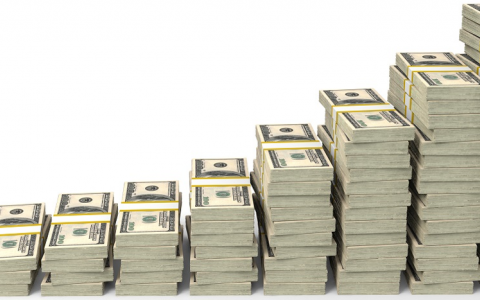
Investors have finally detected the whiff of inflation.
Whether it lingers is the debate now underway as stocks and bonds slide worldwide amid concern that prices are set to accelerate after their post-crisis lull. Though inflation still looks under control in most major economies, pressure is building and there are legitimate reasons to say its return is much nearer than for some time.
That could force the Federal Reserve and fellow central banks to tighten monetary policy more aggressively than anticipated, meaning a sharper end to the era of easy money that’s swaddled markets for years.
“There is clearly a worry about inflation and there is a follow-over to worrying about interest rates and bond yields,” James Bevan, chief investment officer at CCLA Investment Management, told Bloomberg Television.
With those concerns spiraling and volatility surging, here are some of the cases for and against an inflationary revival:
Global Demand
The International Monetary Fund predicts a global economic expansion of 3.9 percent this year and next, which would be the fastest since 2011. It’s synchronized, too, with growth picking up last year in 120 of the countries it monitors, which together account for three-quarters of world output.
Such an environment means firms should be more confident about passing on cost burdens to customers. At JPMorgan Chase & Co., economists led by Bruce Kasman say a “shift away from global goods price deflation is gathering steam.”
Capacity Constraints
More demand leaves many industries running into supply limits, handing them another reason to raise prices.
IHS Markit’s global measure of purchasing managers indexes rose at the quickest pace in more than three-and-a-half years in January and many of the companies it tracks reported a squeeze on resources.
Wages
Workers may enjoy greater bargaining power as labor markets tighten, though that’s a development that’s been forecast and failed to materialize many times already. A source of the stock selloff was Friday’s news that U.S. average earnings rose 2.9 percent in January, the strongest gain since 2009 and reflective of a 4.1 percent unemployment rate.
Germany’s most-powerful labor union just agreed a new pay deal which according to one analysis equates to an annual increase of about 3.7 percent this year and 4 percent in 2019, both well above inflation.
In Japan, where cash earnings likely rose just 0.5 percent at the end of 2017, the labor union is also demanding a raise.
A caveat is that higher wages still might not translate into faster inflation. If so, the traditional relationship between falling unemployment and faster inflation as epitomized by the Phillips Curve may remain broken.
“Unemployment rates relative to past lows may be understating slack, implying that any steepening of the Phillips Curve may therefore not be imminent, even in economies with low unemployment rates,” said Ben May, an economist at Oxford Economics in a report on Monday. “We still consider the upside risks to our inflation forecasts in the advanced economies to be small.”
Commodity Prices
Oil has been caught up in the latest market rout and has fallen from recent highs, but it’s still up almost 30 percent in the past six months.
Gains may continue in the medium term, supporting inflation. Goldman Sachs Group Inc. and Morgan Stanley are among those who’ve recently raised their price view on the back of recent OPEC output cuts.
May at Oxford Economics again says second-round effects from higher energy prices may not occur, meaning the impact on inflation would be temporary.
China
While China’s industrial reflation has been a major reason the world hasn’t slipped into deflation over the past few years, prices are predicted to moderate this year.
And even though consumer prices are on the rise, a strong yuan is helping to keep a lid on import costs and domestic inflation is still contained.
Fiscal Fillip
President Donald Trump’s first major legislative success came in the form of a $1.5 trillion tax cut, which could end up juicing inflation too if it further spurs the economy.
“Fiscal stimulation is hitting the gas, which is driving the economy forward into the capacity constraints, which is triggering interest rate increases that are hitting the brakes, first in the markets and later in the economy,” billionaire Ray Dalio of Bridgewater Associates said on Monday.
Central Banks
Much will depend on how central banks react. While some had already adopted a more hawkish tone, the argument could be made that in the case of the Fed, investors are now finally tuning into what its officials have said for months in flagging a series of gradual interest-rate increases.
The Bank of England raised interest rates in November for the first time in a decade, citing reduced spare capacity in the economy. While its situation is complicated by Brexit, Governor Mark Carney has said his job is now turning more toward the inflation battle.
At the European Central Bank and Bank of Japan, though, the focus remains on below-target inflation. ECB President Mario Draghi said on Monday that he “cannot yet declare victory on this front.”
“What we’ve been watching over the last year and a half is a U.S. and global economy that’s been shaking off the shadow of the financial crisis,” said Kasman of JPMorgan. “As the market has started to see that growth, it has also been watching low inflation and very calm central banks and I think it became complacent.”



